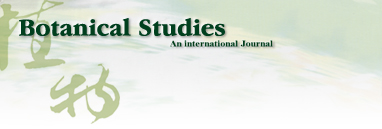 |
|
|
| TITLE | Distribution of summer diatom assemblages in and around a local upwelling in the East China Sea northeast of Taiwan |
| AUTHOR | Kuo-Ping Chiang Department of Fishery Science, National Taiwan Ocean University, Keelung, Taiwan, Republic of China Fuh-Kwo Shiah Institute of Oceanography, National Taiwan University, Taipei, Taiwan, Republic of China Gwo-Ching Gong Department of Oceanography, National Taiwan Ocean University, Keelung, Taiwan, Republic of China |
| FULL TEXT | [in HTML format] [in PDF format] |
| ABSTRACT | Distributions of diatom assemblages in and around a persistent upwelling area off northeastern Taiwan were investigated during summer, 1994. Two water types and two diatom assemblages were defined by principal component analyses. The two water types represent the nutrient-depleted surface water and the nutrient-laden upwelled subsurface Kuroshio Water. During the period of this study, the latter water type did not outcrop but stayed in the subsurface layer, probably resulting from the outflowing of the warm nutrient-poor Taiwan Strait Water. Diatom assemblages indicated the interplay between the two water types. One assemblage, composed of cosmopolitan species in low density, represented the Background Assemblage, which was widely distributed in most of the surface water and also in the underlying upwelling water. The other assemblage, which was observed in the surface water in contact with the underlying upwelling water over the shelf break, represented an Enhanced Assemblage. Some species existing in the Background Assemblage were likely to be enhanced when they were brought into contact with the nutrient-rich upwelled subsurface Kuroshio Water and, subsequently, formed a new assemblage. When the water parcel containing the new assemblage flowed away from the nutrient-rich water, this Enhanced Assemblage sometimes switched back into the Background Assemblage a few days later. |
| KEYWORD | Background Assemblage; Diatom assemblage; East China Sea; Kuroshio; Upwelling; |
| ARTICLE INFO | Botanical Bulletin of Academia Sinica, Volume 38 Number 2 April 1997, page 121-129, 9 pages |
| PUBLISHER | Institute of Plant and Microbial Biology, Academia Sinica, Taipei, Taiwan, Republic of China |
